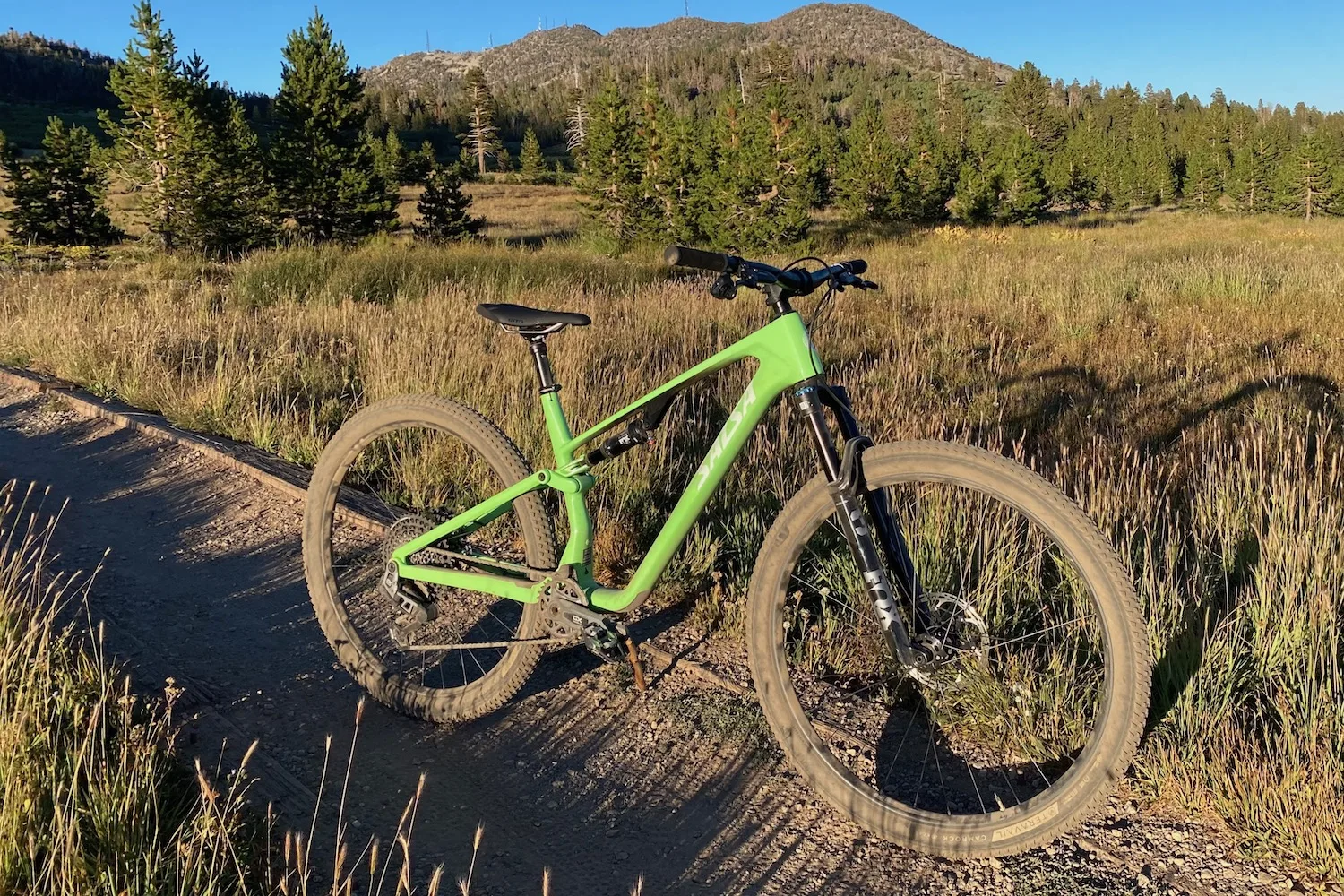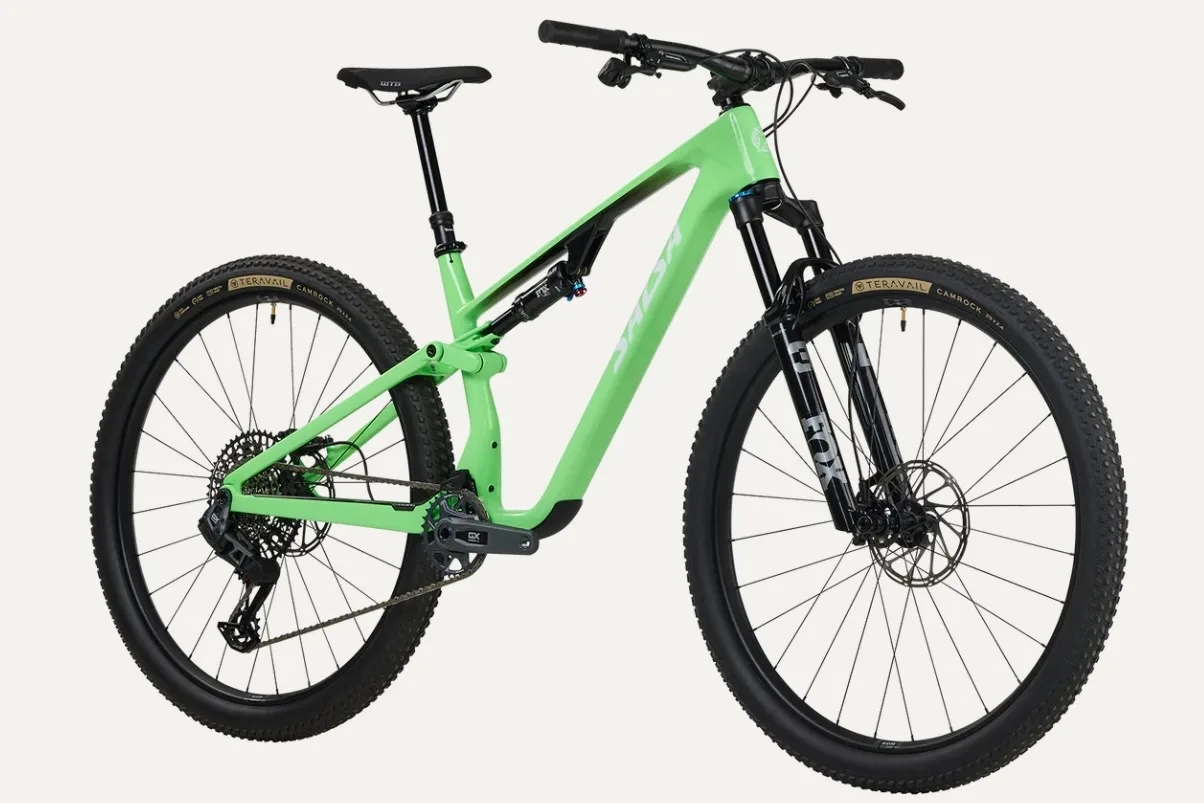Back at Sea Otter, Salsa had several new bikes on display, including the latest version of its cross-country bike, the Spearfish. The Spearfish has been a staple in the brand’s lineup for as long as we can remember, and it has gone through numerous iterations over the years. The previous version came out way back in 2019, so it’s fair to say it was long overdue for an update.
Mountain bike design has been evolving rapidly, and that seems particularly true for cross-country bikes. Modern XC bikes have become increasingly capable while remaining lightweight, efficient, and super responsive. With so much change since the Spearfish’s last update six years ago, the new version is essentially a completely new bike. With a revised and streamlined frame design, increased rear wheel travel, and up-to-date geometry, Salsa has brought the Spearfish back in line with its competitors.
I’ve been riding the new Spearfish C DLX GX Transmission on and off for the past couple of months, and it has been an absolute blast. This bike has far exceeded my expectations, and is super fast, efficient, and impressively capable given its cross-country pedigree. It performs best when kept within its XC wheelhouse, of course, but this bike is a rocketship on the right terrain and holds its own when taken out of its comfort zone.
- MSRP: $6,999
- Frame material: Carbon Deluxe
- Suspension travel: 120 mm front and rear
- Wheel size: 29"
- Measured weight: 27.1 lbs. (Large)
Pros
- Very fast rolling
- Agile and responsive
- Mostly dialed geometry for modern cross country riding
- Lots of fun to ride
- Ample bottle mounts
Cons
- GX Transmission drivetrain was very finicky
- Seat tube angle might be steeper than needed for XC
- Moderate weight for an XC bike
Salsa Spearfish Details
I’ve ridden a few different Salsa mountain bikes in my life, but most have been purposefully budget-oriented for the sake of bike reviews. I’ve gotten along with all of them well enough, but they’ve always felt a bit bland due to heavier aluminum frames or lower-end components. Because of this, I don’t think I’ve ever really given the brand a fair shake. That’s why I was stoked to get my hands on the latest Spearfish, a thoroughbred cross-country bike with a light carbon frame and fancier component spec.
Frame Design
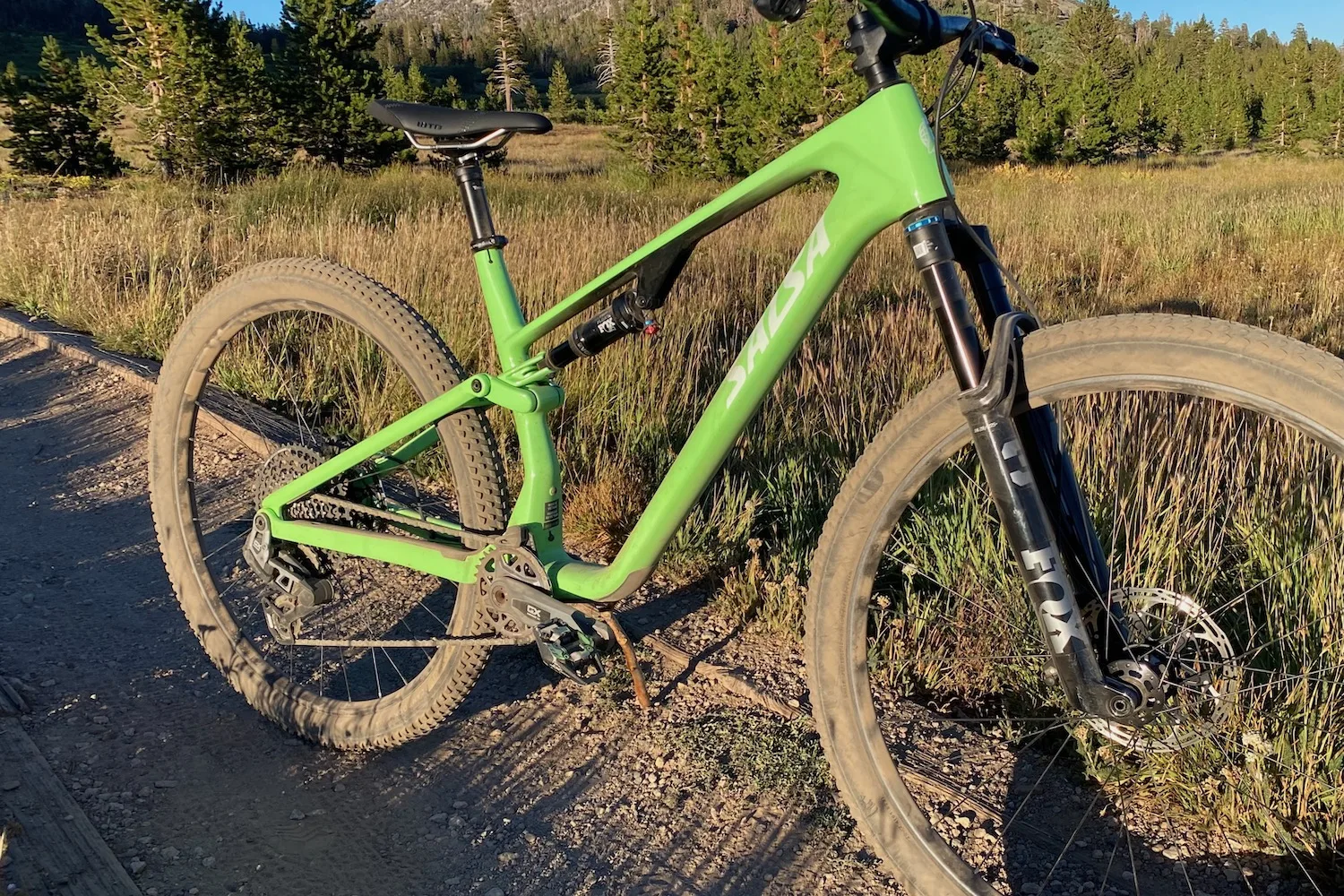
The new Spearfish gets a completely redesigned frame. While the head tube junction and the shape of the downtube resemble its predecessor, the rest of the frame looks like it was put on a diet. The top tube has been straightened and thinned out, and it intersects the seat tube a little lower. Salsa has stuck with its Split Pivot suspension design, but the seat stays appear to be a bit thinner, and they moved back to regular Boost spacing from the Super Boost on the previous version. The new frame gets 120 mm of rear wheel travel (up from 100 mm), and that’s paired with a 120 mm fork. According to Salsa, you could move up to a 130 mm fork without any issues. It comes with 29-inch wheels front and rear on all sizes, and tire clearance is stated at 2.4”.
DLX stands for “deluxe” and refers to the higher-end carbon construction of the Spearfish frame that I tested. Salsa says this is their most premium carbon fiber ever, resulting in a frame that’s 250 grams lighter than their standard carbon construction. Both the GX Transmission and the XO Transmission builds come with the DLX carbon frame, while the more affordable Eagle 90 and Deore builds come with the standard carbon. Salsa also sells the DLX as a frame only with a Fox Float SL factory shock for $3,499.

The Spearfish frame has all the modern touches like internal cable routing, including for a remote shock lockout, and molded rubber downtube and chainstay protection. It also has an impressive number of bottle bosses, making it possible to fit up to three bottles inside the triangle of the M, L, and XL frames — XS and S frames can fit two plus another bolt-on accessory. There are accessory mounts on the top tube, too. It does not have in-frame storage, but the wealth of mounts kinda makes up for that, I suppose.
Geometry
The Spearfish comes in five frame sizes, XS to XL, and should work for most riders between 4’11” and 6’5” or so. Overall, the geometry seems pretty well up to date and aligned with today’s cross-country standards. Salsa also incorporated a flip-chip into the lower shock mount, which relaxes the head tube and seat tube angles by 0.3 degrees and lowers the bottom bracket height by 5mm. For the sake of simplicity, I’ll describe the geometry for the high setting; just bear in mind that it can be tweaked slightly in the low setting.

Compared to its dated predecessor, the new Spearfish is quite a bit longer and slacker. This is most evident in the 66.3-degree head tube angle (high setting), which helps keep the handling sharp but keeps the front end more composed and confident in steeper or rougher terrain. The reach has also grown by ~30 mm on all sizes, with 490 mm on my large frame. Of course, that means the wheelbase has also gotten longer, by ~50 to 60 mm, depending on the frame size.
The seat tube angle has steepened by roughly 3 degrees and is now at 77.3 degrees (more on this later). Chainstay length is a consistent 430 mm across all sizes. Bottom bracket height is listed at 343 mm (unsagged) with 31 mm of drop. Crank length, handlebar width, and dropper post travel vary by frame size for more proportional fits.
Split Pivot Suspension

Salsa increased the rear travel of the Spearfish by 20 mm to 120 mm, but is using its time-tested and proven Split Pivot suspension design. While the majority of XC race bikes have moved to a flex-stay design to save weight, Salsa is sticking to its guns on this one. While the added pivot hardware and material might add a little weight to the frame, Salsa claims that Split Pivot better isolates braking and pedaling forces and allows the suspension to operate independently from them.
While it is quite similar to a linkage-drive single pivot, Split Pivot adds a pivot concentric to the rear axle. This pivot location essentially decouples the brake from the axle as the suspension moves through its travel. This is nearly identical to Trek’s Active Braking Pivot (ABP) suspension, which claims similar performance benefits, of course.
In terms of kinematics, Salsa says “we prioritize a progressive leverage ratio, consistent, lower anti-rise curves, and supportive anti-squat in the pedaling zone.” In theory, this means the suspension should ramp up to prevent harsh bottom-outs, work independently of braking forces, and provide a supportive pedaling platform.
Spearfish C DLX GX Transmission Build

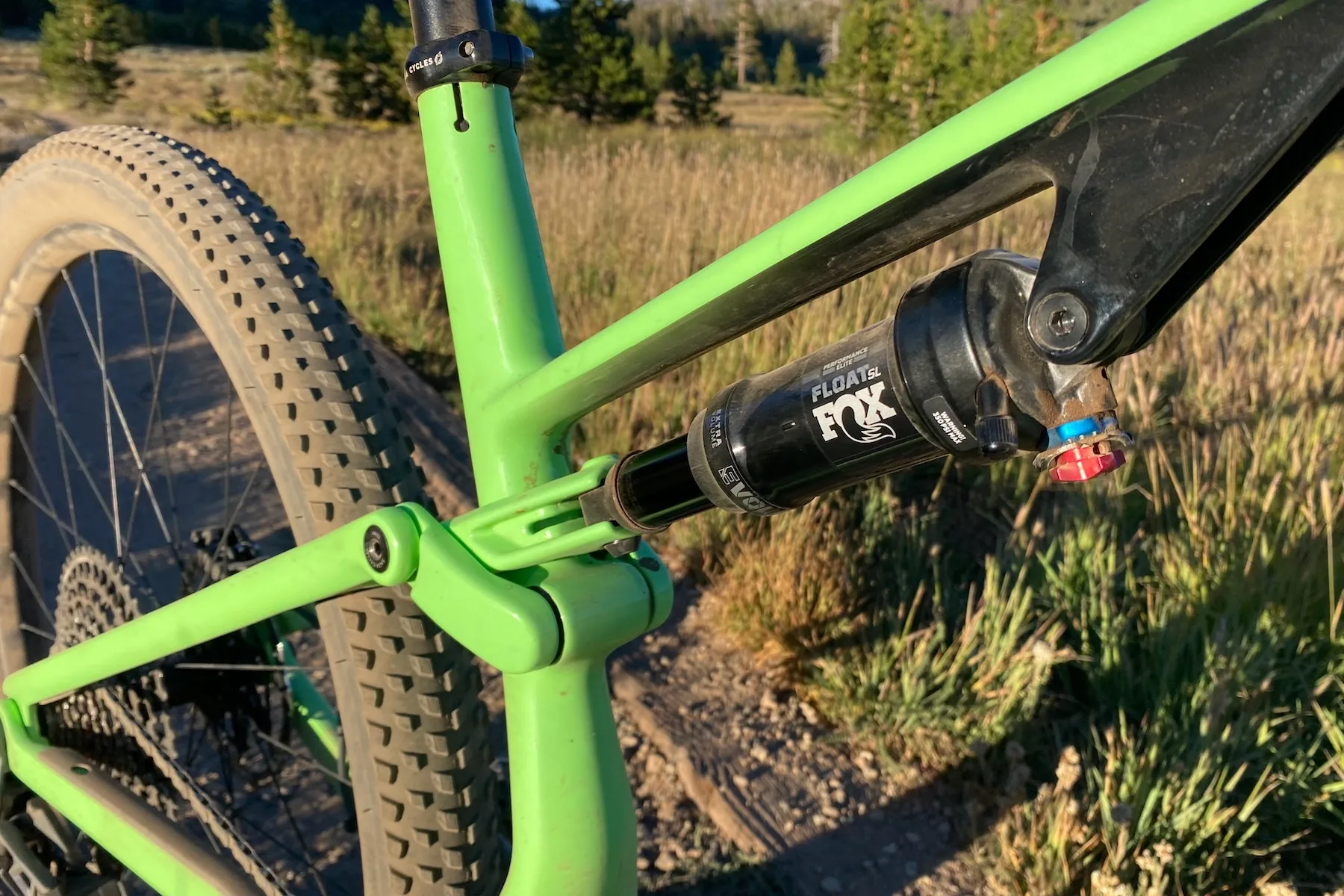
The GX Transmission build sells for $6,999 and is one step down from the top-of-the-line XO Transmission Flight Attendant build. It’s less than a pound heavier than the XO build and saves you $4,000. With that money, you can buy some super-light wheels, a carbon bar, and a lighter dropper, and come in under 26 pounds and probably have some cash leftover. Or, just by the DLX frame and build up the bike you want to begin with.
- Fork: Fox 34 SL Performance Elite, Grip X, 120 mm
- Shock: Fox Float SL LV Performance Elite, 3-pos.
- Drivetrain: SRAM GX Eagle AXS Transmission, 32T, Pod controller
- Brakes: SRAM Motive Bronze Stealth 4-piston, 180 mm Centerline rotors front and rear
- Wheels: WTB KOM Light rims with WTB Frequency hubs
- Tires: Teravail Camrock 29” x 2.4”, Light Trail Casing
- Seatpost: TranzX YS108 RAD+, 170 mm (large)
- Saddle: WTB Silverado, Medium, Chromoly
- Handlebar: Race Face Turbine Alloy, 800 mm (large)
- Stem: Salsa 35 Guide trail: 50 mm
- Grips: WTB Wavelength
- Claimed weight: 26 lbs. 10 oz. (size not specified)
- Measured weight: 27.1 lbs. (size large)
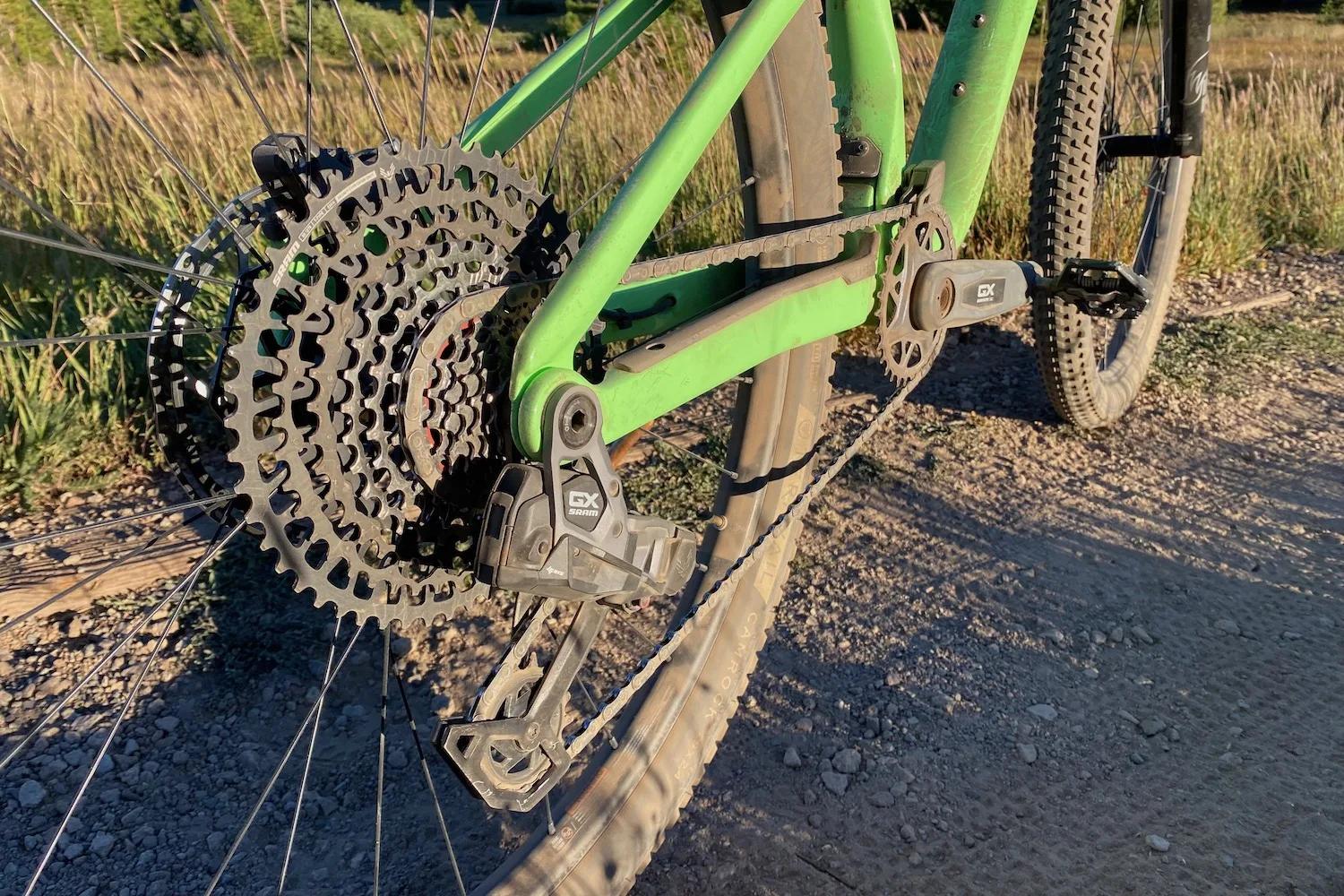
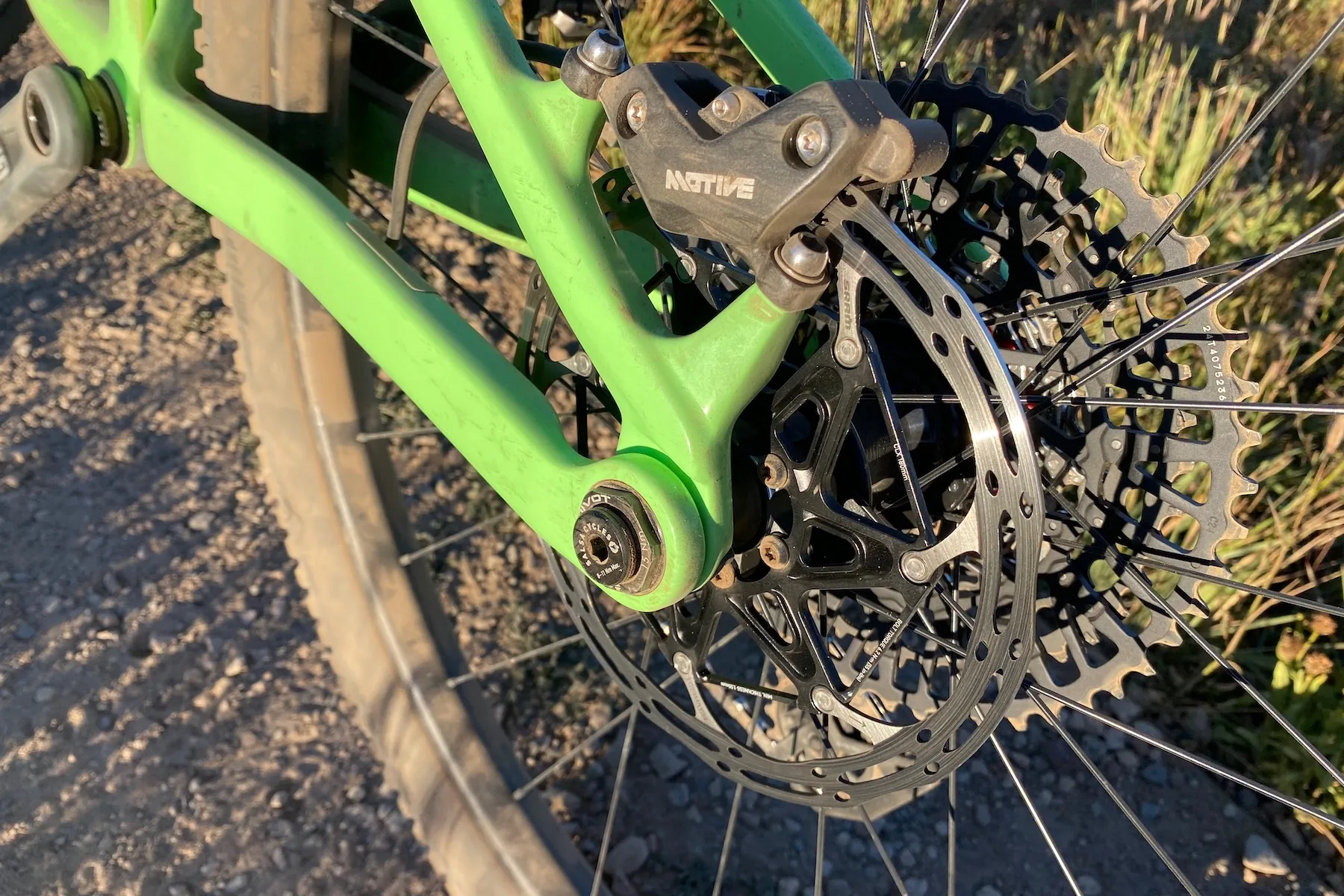
Riding the Salsa Spearfish
In recent years, I’ve taken quite a shine to the new breed of cross-country bikes. With modern geometry and components, the recent crop of XC bikes is far more versatile and fun to ride than they used to be. Last year, I spent quite a bit of time on the new Yeti ASR, and really enjoyed the low weight, impressive efficiency, and surprising capability of that bike. I expected similar performance from the Spearfish, but at 27 pounds, I was a little concerned it might feel a little sluggish or be lost somewhere between a trail and cross-country bike. Those concerns quickly went away.
Climbing
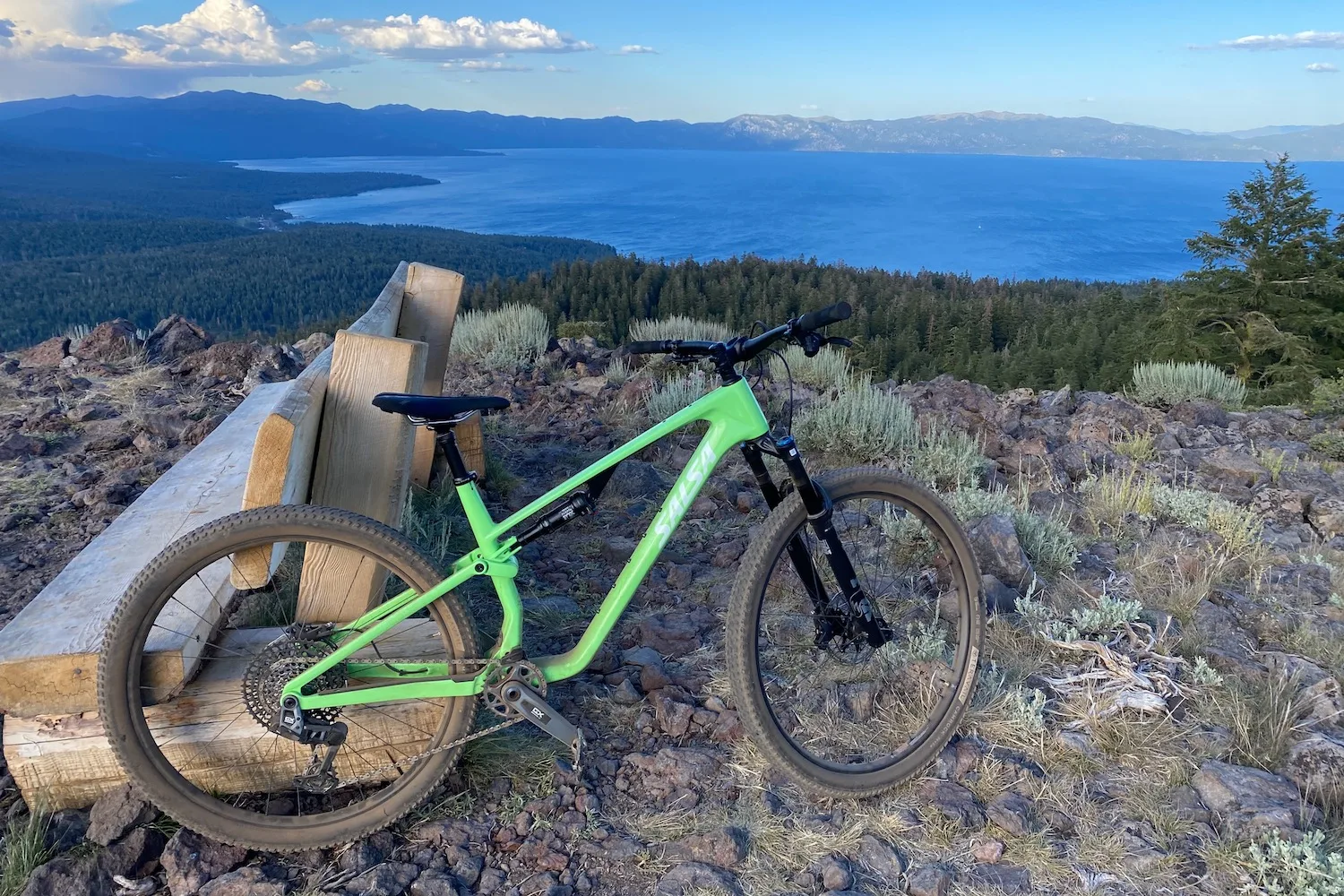
So, I can’t entirely explain it, but this is one of the fastest mountain bikes I’ve ever ridden on the climbs. At 27 pounds, it’s lighter than my regular trail bike but not exactly light for its category. It’s over 3 pounds heavier than the ASR I rode last year, which is pretty darn significant. Still, this bike rolls super fast, and I have been flying uphill. It’s one of those bikes that urges you to go faster and push the pace.
The very first ride I took it on, a six-mile climb with 2,000 feet of elevation gain, I knocked over 3 minutes off my previous best time, and with what felt like less effort. Since then, every climb is a PR if I want it to be, and that’s a wild feeling. It’s especially interesting given that I’m not getting any younger and I’ve had a very off summer due to medical issues, and my fitness is nowhere near its peak. So what’s going on here?
While it adds slightly to the overall weight of the bike, Salsa’s Split Pivot design seems to work quite well. In my experience, it is calm and supportive both in the saddle and out, and I have yet to flip the compression damping switch on the shock to firm it up. At the same time, the rear suspension is active enough over small bumps, and climbing traction has been great, even with the super low-profile tires.
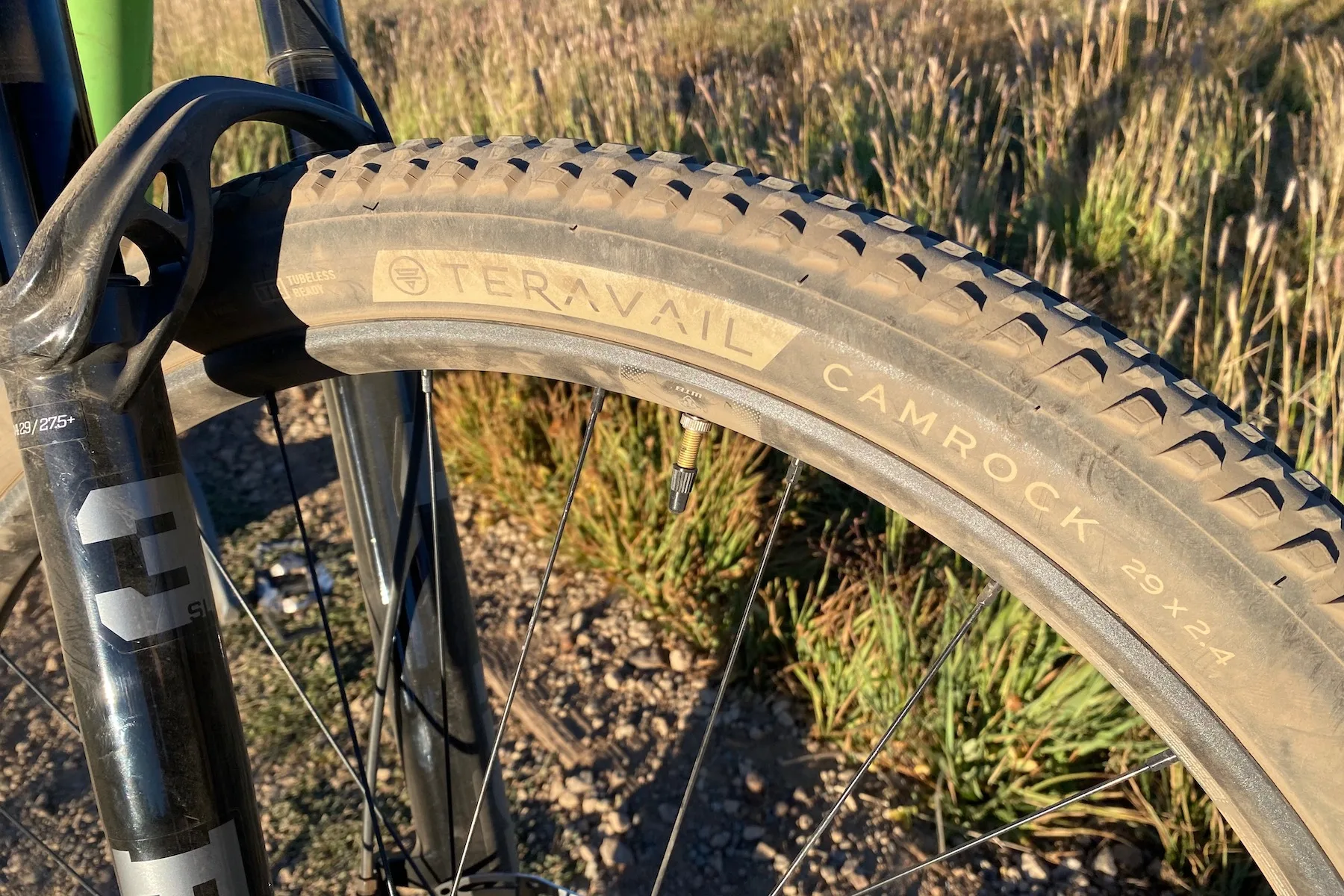
Speaking of those tires, I think they are one of the main factors contributing to its quickness. The Teravail Camrock tread is low profile, and these tires feel like they have virtually no rolling resistance and carry some serious speed. The Light Trail casing is also quite supple, and it conforms nicely to the trail surface, providing more climbing traction than expected.
Geometry-wise, the bike is super comfy for me. The reach is spot on for my needs, and the front end isn’t crazy low like some XC bikes. I’ve got the stem near the top of the spacer stack, and it’s still lower than my trail bike, and I could go lower if I wanted. With the shock sagged, the bottom bracket is fairly low (even in the high setting), and I’ve had some light pedal strikes that have kept me on my toes. The 77.3-degree seat tube angle seems almost a little out of place on an XC bike. I’ve been getting along with it well enough, but there’s a fair amount of pressure on my hands.
Descending

I’d say carrying speed in the flats and zipping uphill are this bike’s strong suits, but it is plenty of fun to ride downhill, too. The only things really holding this bike back are its modest travel numbers and XC tires, but the same could be said of just about any similar bike. It prefers rolling, lower-angle descents with light to moderate doses of rock and technicality, where its responsive handling, playfulness, and efficiency shine. Still, with modern geometry on your side, you can rip around on this thing like a short travel trail bike — once you learn to trust those tires (or swap them out for something different)…
At 120/120 mm of travel, the Spearfish fits right into the modern XC travel bracket. Of course, that’s one of the limiting factors in terrain choice and aggressiveness for XC bikes, and that’s certainly true here. Still, I’ve found the Split Pivot platform to work very well, and I haven’t really noticed any brake jack or drivetrain interference in the rear travel. There’s not a lot to work with back there, but the progressive curve has been preventing any harsh bottom outs unless I’m doing something stupid. This is my first experience riding the new Fox 34 SL, and I’ve been mostly impressed. It’s light, works well, and is appropriate for this bike, even if it is a little flexy in the rough stuff. I’d put its performance in line with the latest RockShox SID forks.
Overall, the geometry has been great for me on the descents. The 490 mm reach is spot on for my lanky body, so it doesn’t feel cramped, and the 66.3 head tube angle keeps steering sharp but avoids feeling twitchy. The 430 mm chainstays keep the rear end maneuverable and have been contributing to this bike’s poppy and playful character. This bike is really a hoot to ride unless you step into terrain way outside of its pay grade.
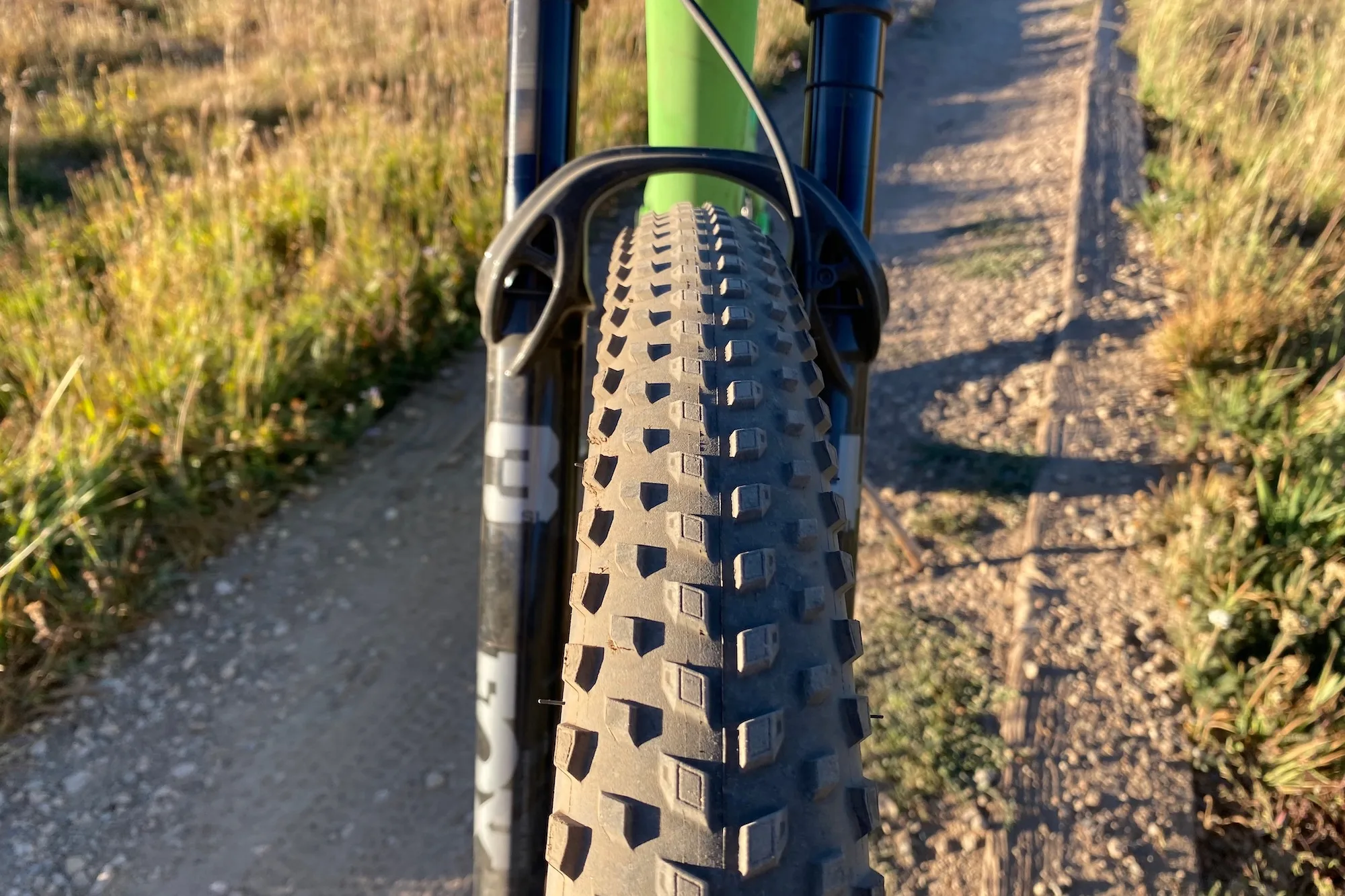
The 4-piston Motive brakes have been working surprisingly well. The dropper post and cockpit are perfectly adequate, but I’d definitely upgrade all of it if I were keeping this bike. I think I could shave some serious weight with a lighter dropper and a carbon handlebar (and wheels, too). Those super-fast-rolling tires took a few rides to get used to on the descents. You’ve really got to account for the rounded profile and short tread lugs when braking and cornering, as they don’t have a ton of bite in either department. I was tempted to swap the front out for something like a Specialized Ground Control or Maxxis Rekon, but I’ve been rolling with it, and it has been pretty fun learning to trust the drift.
If I were keeping this bike, I’d probably also bump the fork travel to 130 mm for a little more cushion and a slightly slacker head tube angle. The trails are pretty rough around here, so I’d at least try it and see how it goes.
What Didn’t I Like?

I like just about everything about this bike. My biggest complaint is about the GX Transmission drivetrain. I’ve tested quite a few Transmission drivetrains, and my experience with them has been very mixed. Half of them have worked perfectly, and the other half have been somewhat finicky. This one was the latter, doing this annoying thing where the cage gets kinda stuck after extending, and you have to flip it back by hand to shift normally again. I also thoroughly dislike the ergonomics of the AXS Pod controllers. Call me old-fashioned, but I’d rather ride mechanical Eagle 90 Transmission or Shimano XT any day.
Some people might disagree with me, but I also think the 77.3-degree seat tube angle is a little too steep for an XC bike. That said, it makes that longer reach figure feel not quite as stretched out as it otherwise could.
Salsa Spearfish: My Takeaway
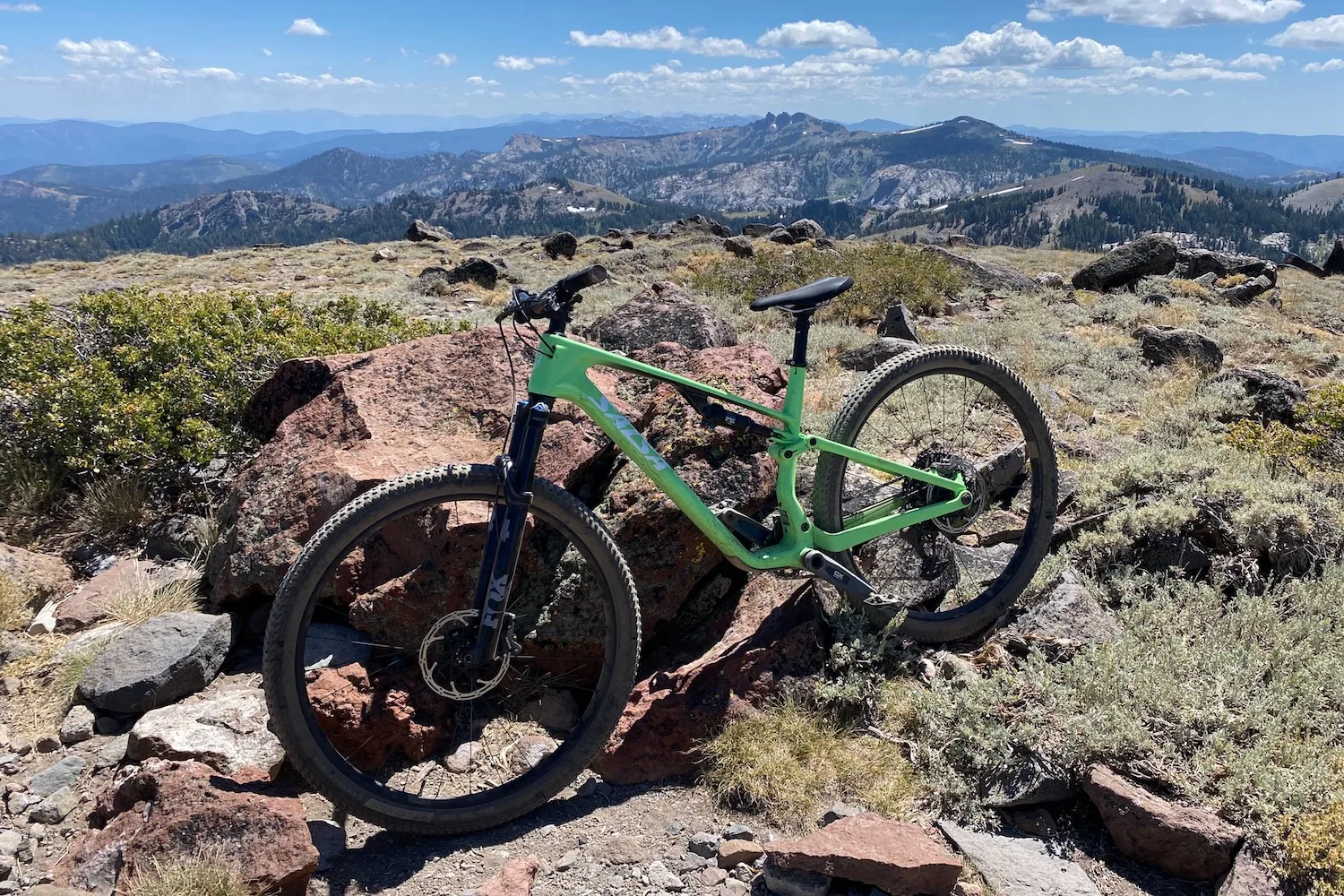
If it sounds like I’ve enjoyed testing the Spearfish, that’s because I really have. This zesty green Salsa is fast, efficient, and lively, even if it isn’t particularly competitive in the weight department. It’s most definitely a cross-country bike, but I found it to be versatile enough to handle terrain outside of pure XC territory. Most importantly, it has been lots of fun to ride while pushing the pace on the climbs and descents.
It strikes me as a great option for cross-country racers or any fitness-oriented riders who like to keep the pace up, cover lots of ground, and don’t feel the need to be “over-biked” most of the time. I could also see it being an excellent fit for long-distance, endurance events, or as a bikepacking/adventure riding rig.
Drivetrain issues aside, this bike has otherwise exceeded my expectations. I’d love to hang onto it for a while and tinker with a 130 mm fork and swap out components to see how light I can make it, but alas, I’ve got to send it back, and I’m sad to see it go.
